
PREMIER League, MAY 4 2025
Fernández (3)
Quansah OG (56)
Palmer (90+6 pen)
Van Dijk (85)
Chelsea boosted their Champions League qualification hopes with this victory over newly crowned Premier League champions Liverpool. Arne Slot made six changes to the team that clinched the title seven days earlier, giving several fringe players a chance to shine. But it was Enzo Maresca’s Chelsea who seized the opportunity, moving level on points with fourth-placed Newcastle United, who they travel to in their next league game.
Enzo Fernández opened the scoring for Chelsea in the third minute, after good work from Cole Palmer and Pedro Neto. In the second half, a jinking run and cross from Palmer led to a Jarell Quansah own goal to make it 2-0. Virgil van Dijk reduced the arrears with a header from a corner, raising the prospect that Chelsea could drop valuable points. Palmer soon quashed that possibility with his first goal in 12 games, scoring from the spot after Quansah had brought down Moisés Caicedo.
How the managers saw it
“We did not plan the game to defend deep,” said Chelsea head coach Enzo Maresca, reacting to Liverpool’s dominance of the ball (see the match statistics further down this page). “We planned the game to high-press in the way we always do, but sometimes the other team is so good that you have to defend deep, you have to adapt and the players dealt with that very well.”
“In general, [it was] a good performance, but the final percentages weren’t there to win this game of football,” said Slot. “[In] the lead-up to both [of the first two Chelsea] goals, a player of ours slipped. Would it have happened as well if the game was on the line [for Liverpool’s title win]? Yes or no, we will never know, but the margins are small in the Premier League, especially if you play a team like Chelsea with so many quality players.”
 136232584511207151667842131711191820
13623258451120715166784213171119182017/6
SHOTS / ON TARGET
8/2
37%
POSSESSION
63%
23
ATTACKS INTO AREA
35
3.03
EXPECTED GOALS (XG)
0.71
Cole Palmer’s influence
Chelsea defended using a back four, but built with a three as Caicedo moved into midfield from right-back. Palmer drifted to the right inside channel, where the home side’s ability to find him was key, as he connected with the front three. Liverpool’s midfield scrambled over to their left, leaving as natural targets Chelsea’s attacking runs into the final third from the other side of the pitch (below). It was in this way that Fernández opened the scoring, converting after Palmer’s forward pass released Neto to cross.
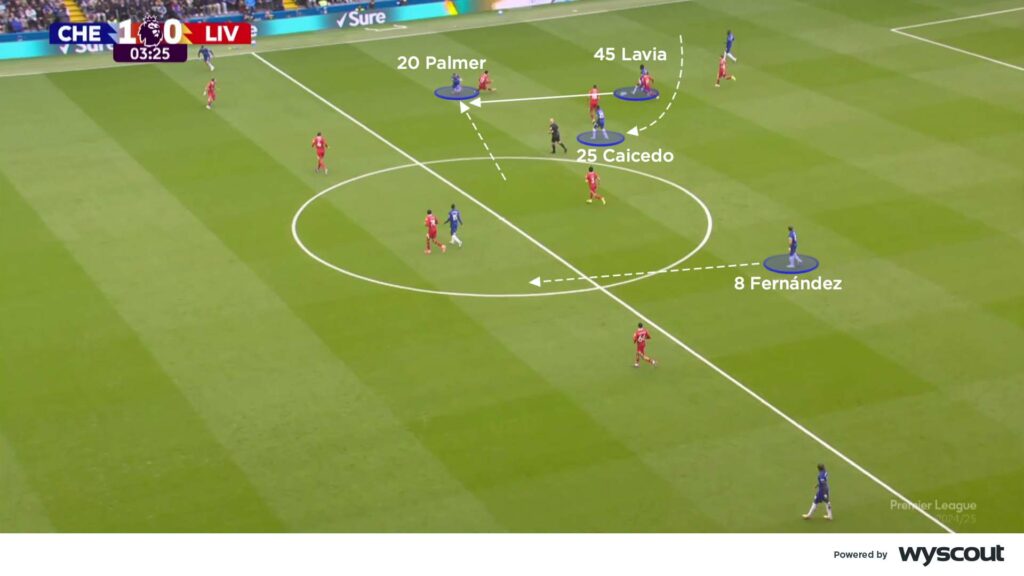
Palmer continued to drift wide in the early stages, as Caicedo moved into midfield. Curtis Jones tightly tracked Palmer, which created space for Caicedo to carry the ball into midfield from right-back. From there, the home side found another method to link with their front three, who were desperate to receive on the move and into spaces behind Liverpool’s back line. Cody Gakpo then began following Caicedo, but Palmer stayed wide and a touch deeper. From there he could receive and play into the front line via left-footed passes, cutting inside from the right (below).
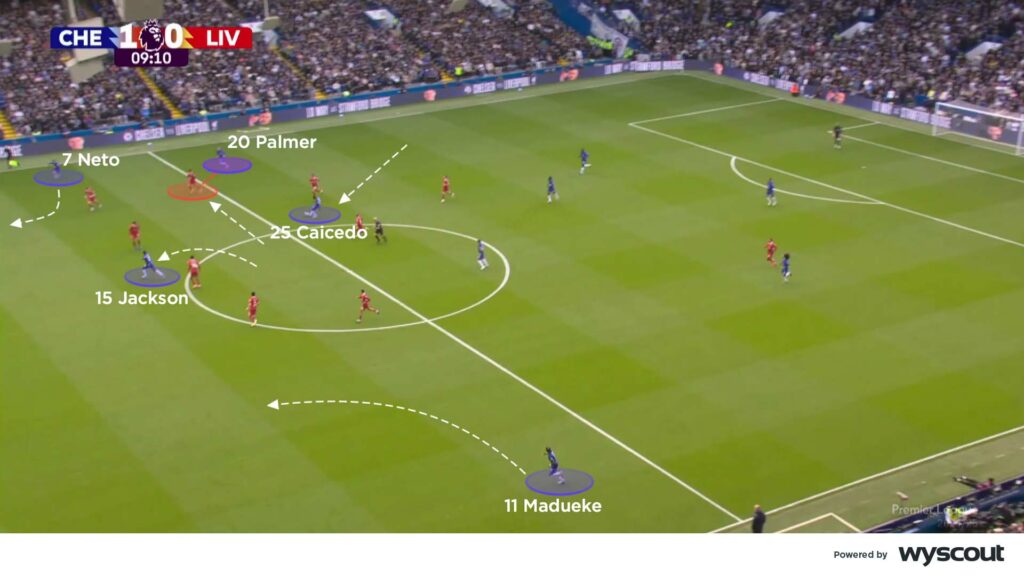
In the second half Palmer didn’t receive as often when wide right, mostly because of Liverpool’s increased possession of the ball. But he maintained a presence in the final third during Chelsea’s attacking play, especially in 1v1 moments. His change of speed and quality on the ball helped penetrate the box with purpose. Similar to the opening goal, Chelsea had good numbers attacking the central spaces inside the penalty area when they got their second, as Liverpool failed to clear their lines (below).
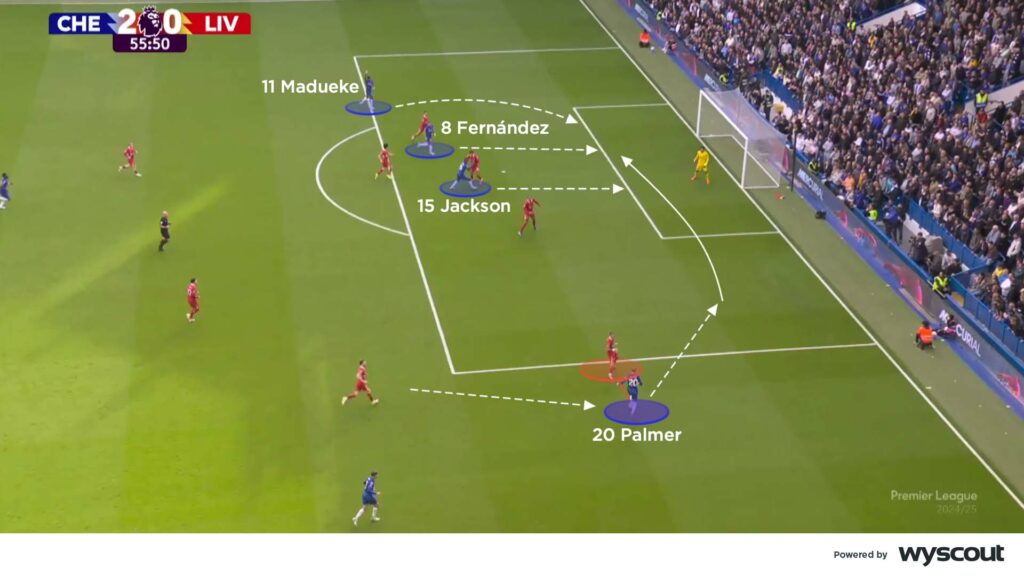
Liverpool’s increased possession
Liverpool’s share of possession grew as the first half progressed, utilising a 4-3-3 shape against Chelsea’s out-of-possession 4-4-2. Whenever Slot’s side found their spare midfielder, they were able to progress forward with purpose – often with direct passes into the front line, to set the ball back (below). Trent Alexander-Arnold’s narrowing during their build also helped bounce the ball around Chelsea’s first line, connecting well into pivot Wataru Endo.
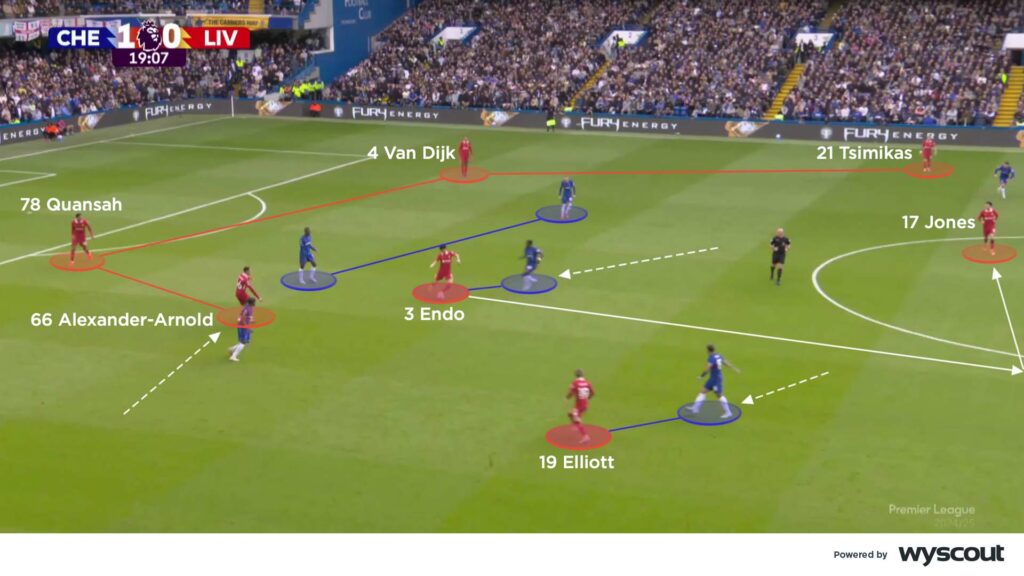
Chelsea responded by adapting their defensive shape to increase and apply better pressure to Liverpool’s build. Palmer and Nicolas Jackson continued to defend in the first line, with Fernández and Lavia working on Endo and the central midfielder closest to the ball. Liverpool’s far midfielder was taken by one of Chelsea’s centre-backs advancing well out of the back line. Either Trevoh Chalobah or Levi Colwill marked in midfield, with Noni Madueke often narrowing (below) due to Alexander-Arnold’s narrowed movements from right-back.
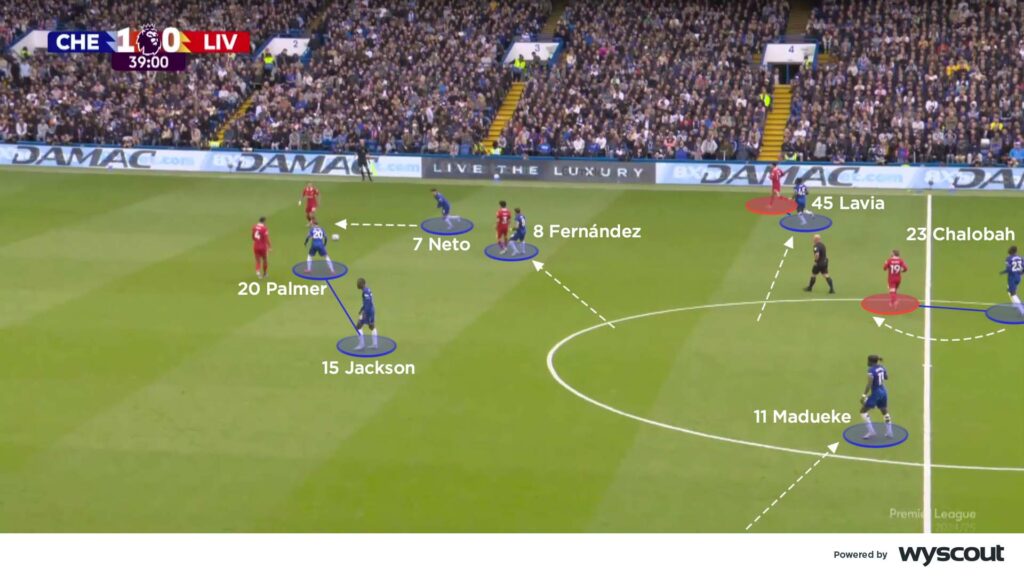
Slot’s second-half tweaks
In the second half, Jones often dropped from Liverpool’s central midfield. When he worked alongside his two centre-backs, particularly to their left, Kostas Tsimikas advanced from left-back and Gakpo moved inwards. This helped Liverpool build around Chelsea’s first line, then connect back inside. Gakpo’s narrow position supported Diogo Jota for central combinations, with Alexander-Arnold’s movement inwards allowing Harvey Elliott to provide the same support on the other side (below). From here, Liverpool’s narrow crossing probed and created chances.
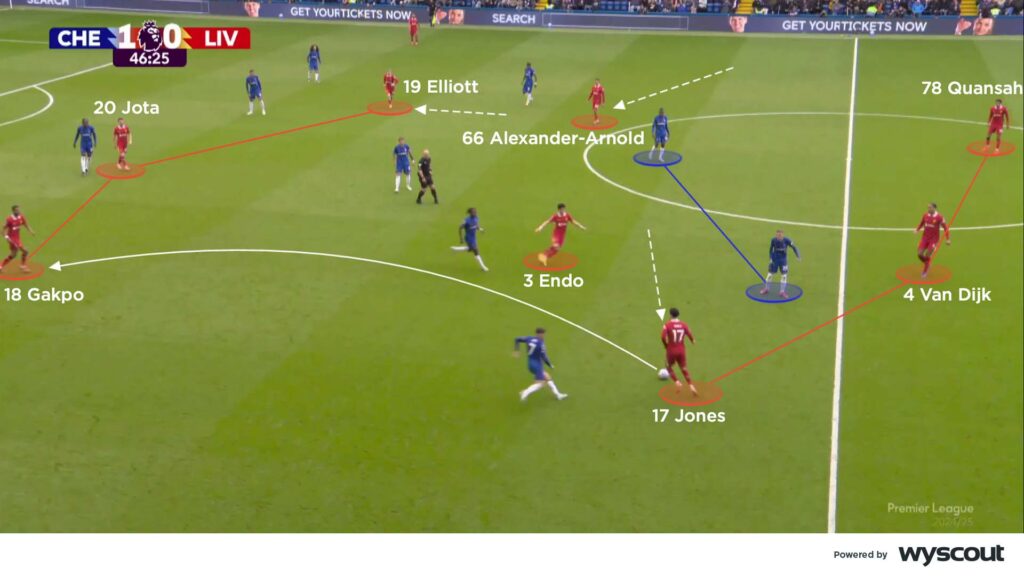
Seeking a breakthrough, Slot introduced Alexis Mac Allister and Dominik Szoboszlai on 69 minutes for Endo and Elliott. Jones then moved to the pivot role and began dropping between Liverpool’s centre-backs. This adapted back line still stepped into midfield around Palmer and Jackson, with Gakpo inside and able to connect. Liverpool now had a much stronger presence between the lines, courtesy of Mac Allister and Szoboszlai, as well as substitute Conor Bradley. The latter provided similar support to the player he had replaced – Alexander-Arnold – and worked inside Salah, who stayed wide right (below).
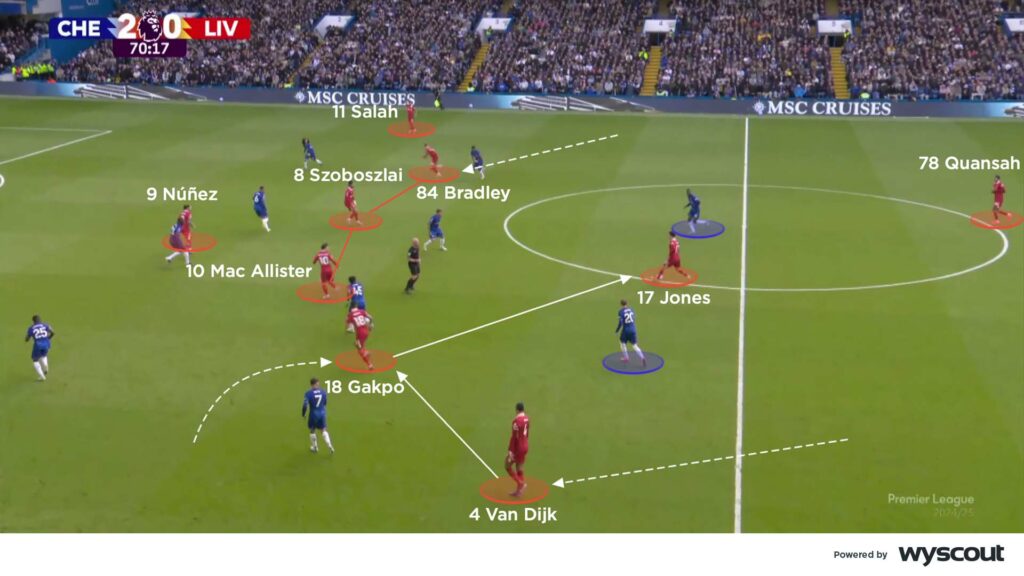
As a result, Liverpool had multiple final-third entries and created chances in the second period. However, they failed to work attempts on target – Van Dijk’s 85th-minute goal from a corner was their only effort on target after the ninth minute. Rather than Liverpool rescuing a point, it was left to Palmer to seal a satisfying afternoon for himself and Chelsea.
To learn more about football tactics and gain insights from coaches at the top of the game, visit CV Academy



